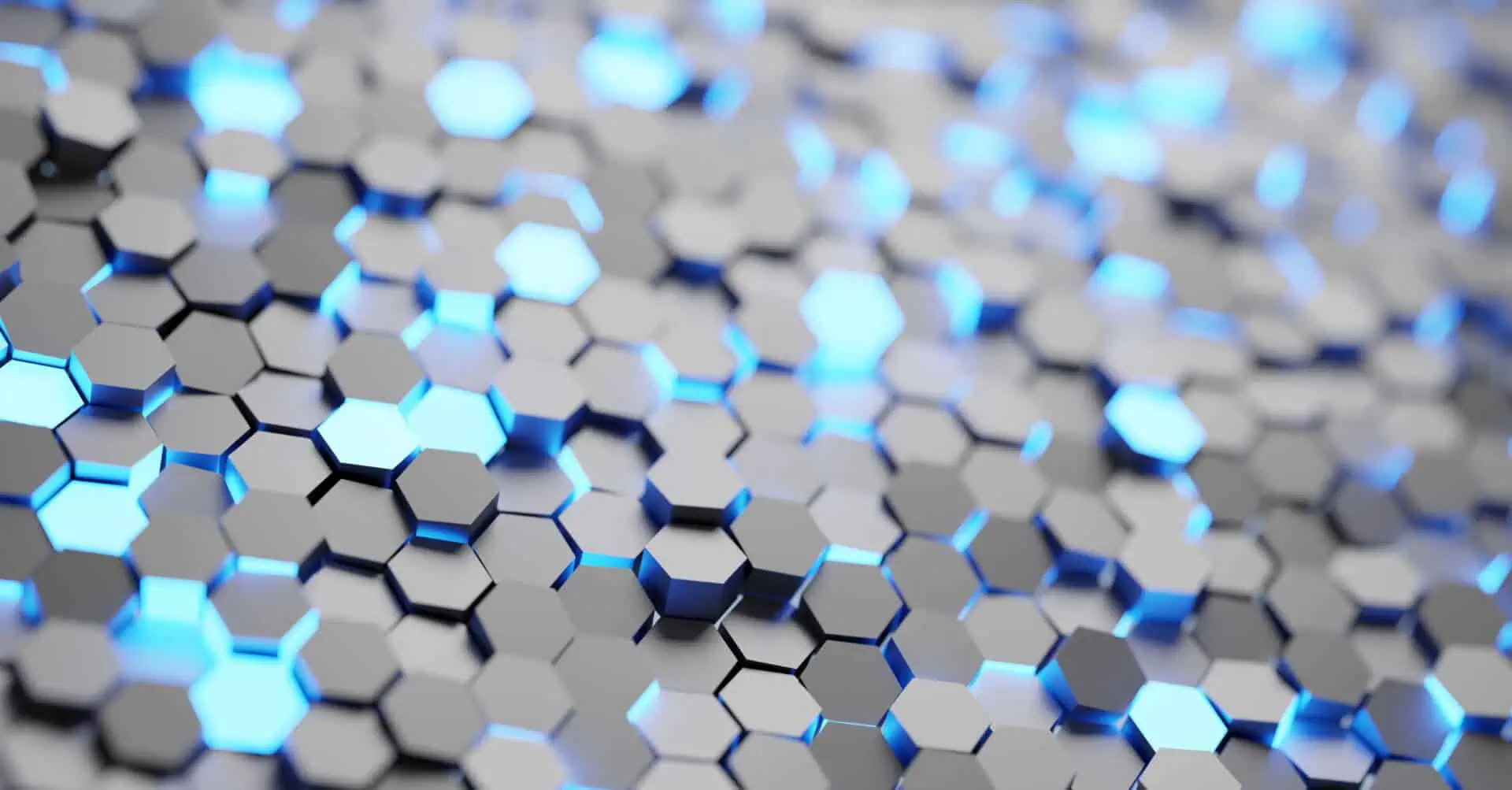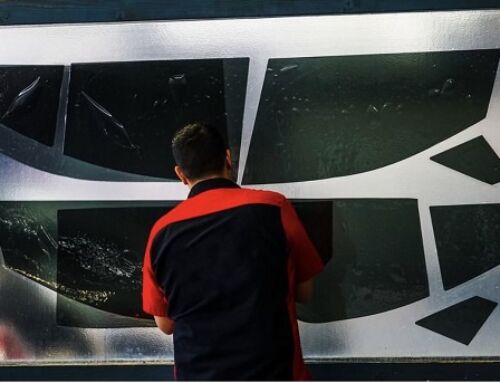If you’re looking to boost comfort and protect your interior from sun damage, ceramic window tinting is worth considering. This modern technology provides more benefits than traditional tints.
With superior heat rejection, UV protection, and reduced glare, the advantages are clear.
But how does it actually work?
Let’s explore the science behind ceramic window tint and see why it’s worth the investment. And how is it better than regular tint for comfort and long-term durability?
What is Nano-Ceramic Technology?
Nano-ceramic technology is pretty fascinating. It involves embedding tiny ceramic particles into the window film.
These particles are microscopic but super effective at blocking out harmful rays and heat. This advanced material is different from traditional tints, which usually rely on dyes or metals.
If you’re considering ceramic tint, you’ll find it’s a modern choice for better performance.
How Nano-Ceramic Window Films Work?
The secret behind ceramic window tint lies in its unique composition. The ceramic particles are non-conductive and non-metallic. This means they won’t mess with your electronic devices, GPS, or mobile phone signals.
That’s a huge plus, especially for modern vehicles and homes packed with tech gadgets.
Nano-ceramic window film is also highly resistant to heat. It reflects light and absorbs much less heat than standard tints. This means it does a great job at heat rejection, helping to keep your car or room cooler. Plus, you get the added bonus of UV protection ceramic tint.
So, if you’re comparing ceramic tint vs regular tint, the benefits become clear fast.
What Are Nano-Ceramic Window Films Made Of?
Nano-ceramic window tints have several layers. Each layer has a job to do, making them perform so well.
At the heart of it, they have a layer filled with tiny ceramic particles. This gives them their high quality. These particles are set in a strong layer that sticks the tint to the window.
Let’s break down the layers:
- Top Layer: This is the outside layer. It’s tough and resistant to scratches/scuffs. This keeps the tint looking clear and neat.
- Ceramic Particle Layer: This middle layer is packed with tiny ceramic bits. These particles block heat and UV rays. They’re not metal, so they don’t interfere with electronics.
- Sticky Layer: This bottom layer holds everything together. It makes sure the film sticks firmly to the window.
Benefits of Ceramic Tint
Ceramic window tint is becoming increasingly popular due to its advanced features.
The global market for window tint films, which includes ceramic options, was valued at around $11.4 billion in 2024 and is expected to grow to approximately $19.3 billion by 2025.
Additionally, the market specifically for automotive tinting film, which includes ceramic tints, was estimated to be worth about $3.6 billion in 2023, and it is projected to grow at an annual rate of 5.2% from 2024 to 2030.
Why is ceramic window tint so popular? Because it offers several benefits.
What are they? Let’s explore them one by one:
-
Ceramic Tint Rejects Heat Effectively
Ceramic tinting is excellent for heat rejection. It can block up to 80% of solar heat. This makes your car or room so much more comfortable, especially during those hot summer days. You won’t have to crank up the air conditioning as much, which is a nice bonus.
-
It Ensures Superior UV Protection
One of the best features of ceramic window tint is its superior UV protection. These films can block up to 99% of UV rays. This is important for protecting your skin from harmful rays and helps prevent the interior of your vehicle from fading. If you care about maintaining your car’s interior, UV protection ceramic tint is a smart choice.
-
It Preserves Clear Vision
Unlike dyed or metallic tints, ceramic window tint doesn’t sacrifice clarity for protection. You still get a clear view of the road without any darkening or haziness. This is a huge advantage over regular tints, making it easier and safer to drive.
-
It Delivers Durability
Another big plus is the durability of ceramic tint. It’s more resistant to scratches and fading compared to regular tints. This means that once you install it, you won’t have to worry about replacing it anytime soon. It’s built to last.
-
Avoids Signal Interference
Since ceramic tint is non-metallic, it won’t interfere with signals from your GPS, mobile phone, or other electronic devices. This is especially important in today’s connected world. You don’t want your tint causing any signal disruptions.
-
Ceramic Tint Enhances Privacy and Security
Ceramic tint is great for privacy. It makes it harder for people outside to see into your car or room. This extra privacy means that the things inside your car or room stay hidden from strangers. It also helps you feel safer and more secure.
When you’re parked in a busy place or driving through crowded streets, you don’t have to worry as much about people looking in. You’ll definitely feel more at ease.
So, ceramic tint not only keeps things cool, but it also keeps your space private and safe.
So, Where Can You Use Ceramic Tinting?
Ceramic window tinting is super versatile. You can use it in lots of places.
Here are some common and popular applications:
- Cars: This is probably where you see ceramic tinting the most. Putting ceramic tints on car windows helps keep the interior cool. It also protects the inside of your car from UV damage. Plus, it reduces glare, making driving safer and more comfortable.
- Homes: People also use ceramic tints on their house windows. It’s great for keeping rooms cooler in the summer. This can save money on air conditioning. It also protects your furniture and floors from fading because of UV rays. And, it helps reduce glare on screens, making it easier to watch TV or work on a computer.
- Offices: Office buildings benefit from ceramic tinting too. It helps create a more comfortable environment for workers. Cooler rooms can make it easier to concentrate and be productive. The tint also protects office furniture and equipment from UV damage. And of course, it can help save on energy costs by reducing the need for cooling.
- Retail Stores: Shops can use ceramic tints to protect their goods from fading in the sunlight. This can be a huge help for places with big windows. It also makes the store more comfortable for customers and employees. And it can save money on air conditioning bills.
- Marine Vehicles: Boats and yachts can also benefit from ceramic tinting. The sun can be intense on the water, but the tints can help keep cabin areas cooler. They also protect interiors from fading and reduce glare, making it easier to navigate.
Ceramic Tint vs. Regular Tint: Which Is The Best?
Now, let’s talk about the differences between ceramic tint and regular tint. If you’ve ever thought about getting window tint, this might be helpful.
Regular tints are pretty common. They can provide some UV protection and help reduce the heat, but there’s a catch. Over time, regular tints can fade. That’s mostly because they use dyes. These dyes can start to change color, and that’s not something you’d want for your windows.
Now, ceramic tint is a different story. It doesn’t use dyes, so it doesn’t fade like regular tint. It keeps your car cool and blocks harmful UV rays for a long time. Plus, ceramic tint is really tough. It can handle scratches and wear better than regular tint.
So, while ceramic tint might cost a bit more upfront, it’s worth it in the long run. You get better protection, and you won’t have to replace it as often. This makes ceramic tint a smart choice for anyone looking to tint their windows.
How Much Does Ceramic Tint Cost?
Ceramic tint cost tends to be higher than traditional tints. Prices vary based on the level of heat rejection and UV protection. Generally, it ranges from a few hundred to over a thousand dollars. The price may seem steep upfront, but the long-term benefits often justify the cost.
What’s the Best Ceramic Tint?
Choosing the best ceramic tint involves considering your specific needs and budget. Look for tints with high heat rejection rates, excellent UV protection, and good reviews. Some of the top brands in the market have advanced offerings that ensure maximum performance.
How Well Does Ceramic Tint Perform?
Ceramic tint performance is often superior to other types of window tints. It keeps your space cooler, protects interiors, and enhances comfort. The film’s clarity also ensures that your view is not obstructed, making it a preferred choice for many.
Is Ceramic Tint Worth It?
So, is ceramic tint worth it?
If you value long-term comfort, protection, and durability, then yes. The initial investment might be higher, but the benefits in terms of heat rejection, UV protection, and longevity make ceramic window film a smart choice.
Therefore, nano-ceramic window films offer unmatched benefits. From superior heat rejection and UV protection to maintaining clarity and durability, they are an excellent investment for your vehicle or home.
If you’re looking for high-quality ceramic tints for your car, home, or office, make sure to check out TMR Films.



